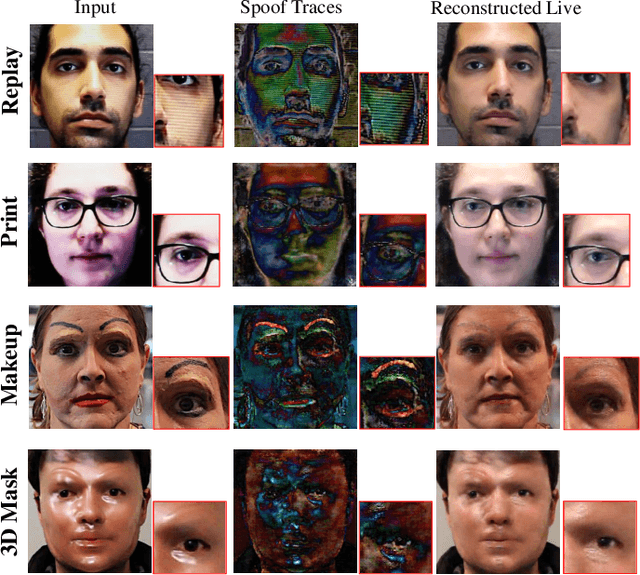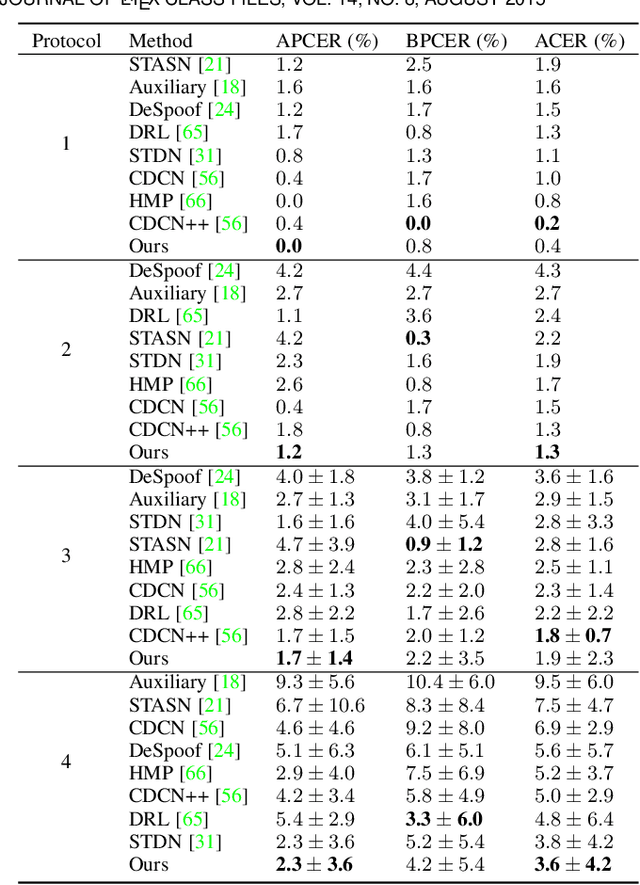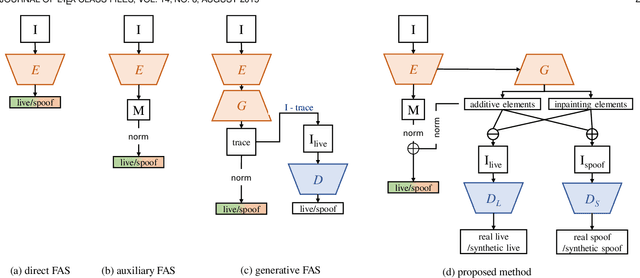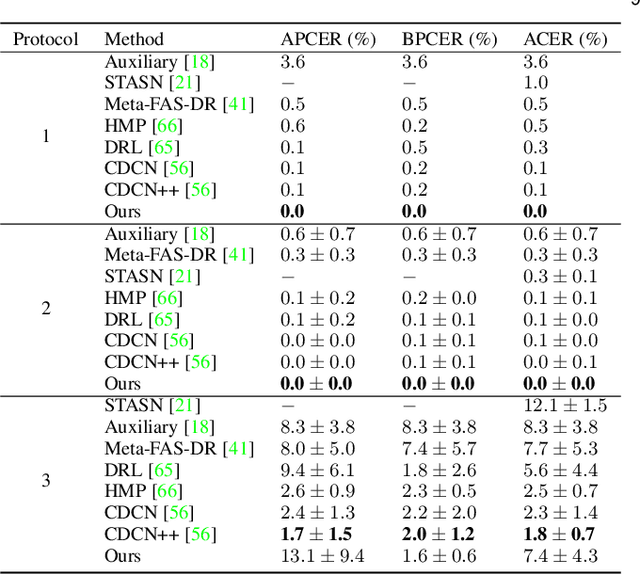Physics-Guided Spoof Trace Disentanglement for Generic Face Anti-Spoofing
Paper and Code
Dec 09, 2020



Prior studies show that the key to face anti-spoofing lies in the subtle image pattern, termed "spoof trace", e.g., color distortion, 3D mask edge, Moire pattern, and many others. Designing a generic face anti-spoofing model to estimate those spoof traces can improve not only the generalization of the spoof detection, but also the interpretability of the model's decision. Yet, this is a challenging task due to the diversity of spoof types and the lack of ground truth in spoof traces. In this work, we design a novel adversarial learning framework to disentangle spoof faces into the spoof traces and the live counterparts. Guided by physical properties, the spoof generation is represented as a combination of additive process and inpainting process. Additive process describes spoofing as spoof material introducing extra patterns (e.g., moire pattern), where the live counterpart can be recovered by removing those patterns. Inpainting process describes spoofing as spoof material fully covering certain regions, where the live counterpart of those regions has to be "guessed". We use 3 additive components and 1 inpainting component to represent traces at different frequency bands. The disentangled spoof traces can be utilized to synthesize realistic new spoof faces after proper geometric correction, and the synthesized spoof can be used for training and improve the generalization of spoof detection. Our approach demonstrates superior spoof detection performance on 3 testing scenarios: known attacks, unknown attacks, and open-set attacks. Meanwhile, it provides a visually-convincing estimation of the spoof traces. Source code and pre-trained models will be publicly available upon publication.
 Add to Chrome
Add to Chrome Add to Firefox
Add to Firefox Add to Edge
Add to Edge